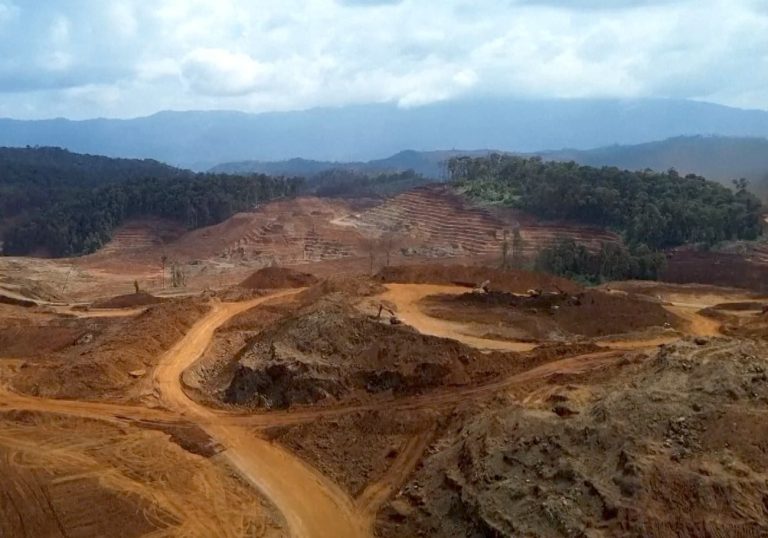
Indonesia's nickel mining boom, sparked by a race to transition from fossil fuels, is destroying vast tracts of rainforest and coastal communities. [emphasis, links added]
Across the country, efforts are being made to exploit the country's rich natural resources. …
Rows of chimneys spewing smoke tower above schools and homes in what was once a rural community The scene is reminiscent of the work of LS Lowry, whose paintings captured life in the industrial north-west of England in the mid-20th century.
Indonesia is currently the world’s largest nickel producer, Accounting for 15% of global laterite nickel resources – Low-grade mineral deposits usually found near the surface.
But demand is still soaring with the rise of electric vehicles (EVs), whose batteries rely on it.
International Energy Agency (IEA) forecast Global demand for the metal will grow by at least 65% by 2030By 2040, electric vehicles and battery storage will overtake stainless steel as the largest end-users of nickel.
Multibillion-dollar Chinese companies dominate Indonesian nickel market But they often obtain cheap ore from hundreds of smaller, mostly locally owned mines scattered throughout the rainforest.
The mines have transformed once-peaceful farming villages and communities, providing economic opportunities but pollution that has also created health and environmental crises.
In just three years, Indonesia has signed more than a dozen battery materials and electric vehicle production agreements with global manufacturers such as Hyundai, LG, and Foxconn, worth more than US$15 billion.

In 2021, Indonesia opened a new nickel smelter in North Morowali regency in central Sulawesi. It has the annual processing capacity of 13 million tons of nickel ore.
Sulawesi, an Indonesian island east of Borneo, is a peaceful land known for its pristine coral reefs, dive sites and prehistoric cave paintings. But it is quickly becoming an industrial hub.
The chimneys of nickel processing company PT Obsidian Stainless Steel spew smoke into the air 24 hours a day, and flames light up the night sky.
Once dotted with vibrant fishing villages, the land in the Moravi region is now pockmarked by craters left by large-scale mining.

The coastline has been abandoned.
The sand is covered with a kaleidoscope of mineral pigments and the docks are dotted with docks where barges wait to deliver nickel ore.
After sunrise in the village of Lapola, thousands of workers on motorcycles, wearing yellow helmets and dusty overalls, crowded the potholed main road.
Heavy traffic flows to Indonesia's Morowali Industrial Park, better known as IMIP, which is the center of the country's nickel production.
IMIP primarily processes nickel ore to produce stainless steel, but now Higher-grade nickel is increasingly produced for use in electric vehicle batteries.
The top picture is from Taiwan Plus News screencap
Take a break from reading on MSN
